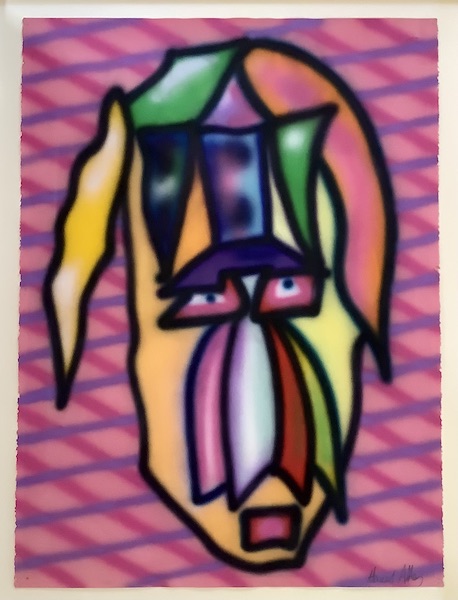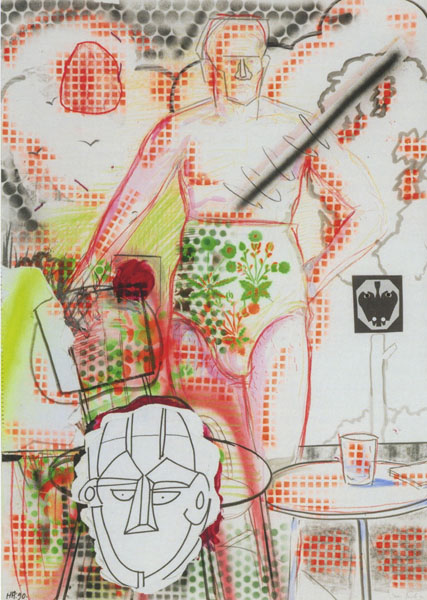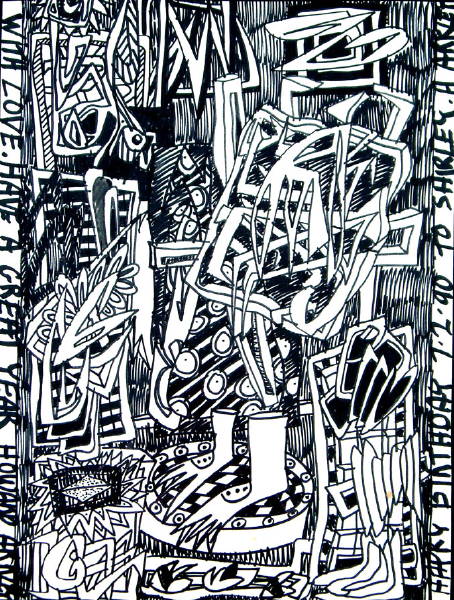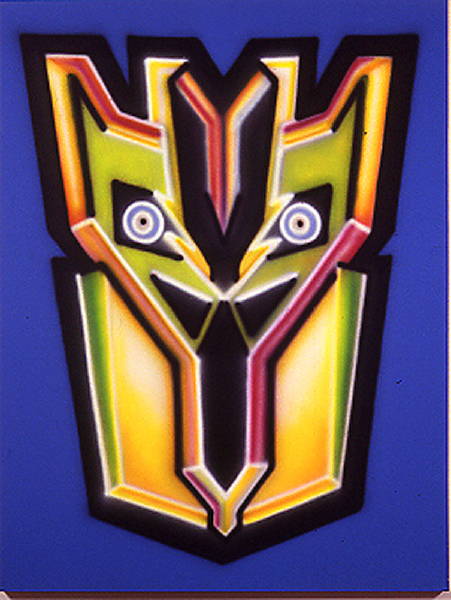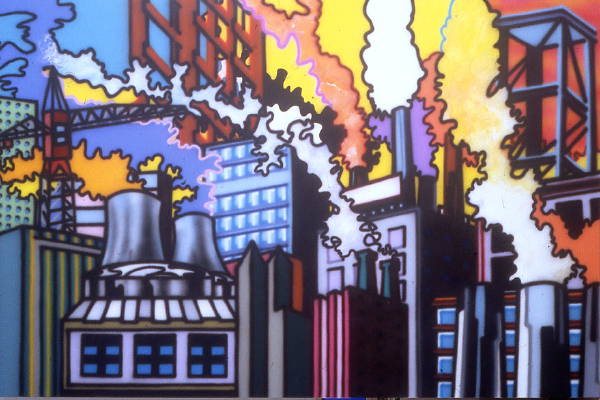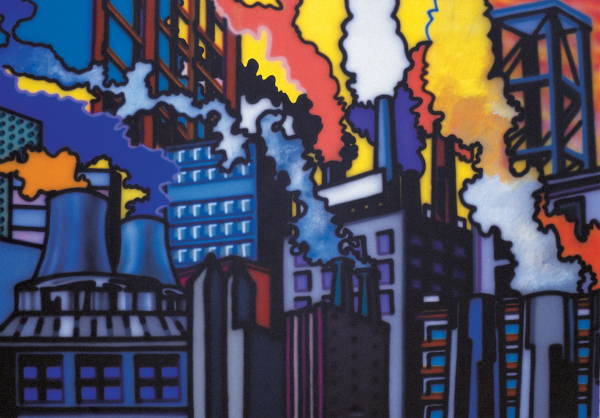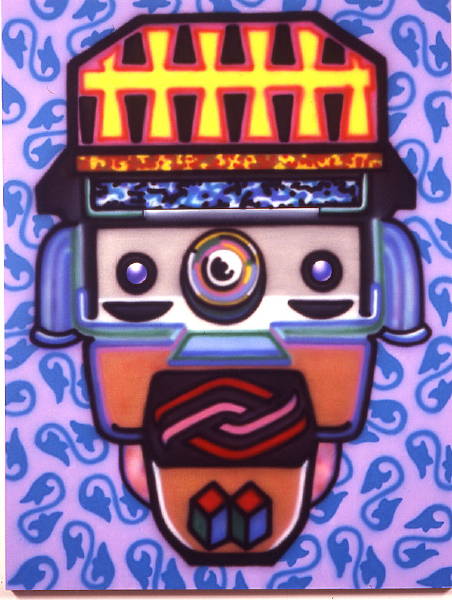Synthetic polymer paint on canvas, 175 x 135
Collection unknown [last auctioned May 2023]
This work, probably the most arresting painting in Arkley’s 1990 ‘Head Show’, was based on a comic-book source (modified copies preserved in Arkley’s archive [State Library of Victoria]).
Already widely reproduced during the 1990s (e.g. on the cover of Art + Text, Jan.1992), the painting has attracted particular attention since the artist’s death, often being seen as a revealing self-image.
In 2003, for instance, it was included as no.11 of a set of 12 large-format reproductions of Australian ‘Faces’ spanning the period from 1788 to the present, produced for schools. The accompanying text, emphasizing Arkley’s post-modern characteristics (especially his taste for appropriation), suggested that the painting ‘was seen as the most inspired work’ from the 1990 Tolarno show, and speculated: ‘Was it a self portrait of a man on the brink of madness, a man seeing something that no one else could see?’ (Hart 2003). In 2004, Metro 5 gallery director Brian Kino upped the interpretative ante, describing the picture, in a Melbourne newspaper story on Australia’s 12 allegedly most important paintings, as ‘a chilling self-portrait… [of]… a wild-eyed madman confronting his future fears and seeing his future demise’ (Herald Sun Weekend, 6 March 2004).
The origins of these interpretations can be traced to the Age article published at the time of the 1990 exhibition, quoting Arkley as saying all the paintings in the show were in a sense self-portraits (Trioli 1990). The article featured a dramatic photo by Cathryn Tremain, showing the artist himself juxtaposed to the pop-eyed features of this painting.
There is no doubting the vivid character of this work, but analyses treating it simply as a ‘self-portrait’ tend to limit its scope, and also deflect attention from the formal and colouristic achievements involved (for comments along these lines, see e.g. Carnival 106). In a subtle analysis in Spray, Crawford and Edgar address the humorous and ironic dimensions of the work, and its recreation of ‘the hallucinogenic experience first distilled in Zappo (1983)’.
Second Psychedelic Head (1992) is a different work, based on another comic-book source.
Provenance
- P/C Melb. (recorded in HA Monash 1991 exh.planning notes)
- Auctioned by Sotheby’s, Melb., 26 April 1992 (est.$6-8,000; sold for $7,150 inc. buyer’s premium)
- Auctioned by Deutscher-Menzies, Melb., 22 Nov.1998, lot 326 (details as above; est.$8-12,000; not sold: details via AASD website 9/09)
- At Kozminsky’s, Melb. 2000
- At Metro 5, Melb., 2/02 (priced at $135,000)
- Auctioned by Sotheby’s, Melb., 4 May 2004, lot 32 (est.$70-100,000; sold for $97,500 plus buyer’s premium [$115,062])
- Collection of Selwyn & Renata Litton, Sydney, acquired from the above
- Auctioned by Smith & Singer, Sydney, 2 May 2023: ill., dets.as above; est.$250-350,000; sold for $490,909 (inc.B/P)
Exhibited
- HA Tolarno 10/90 (‘The Head Show’), cat.4
- HA Monash 1991, cat.79
- Metro 5, Melb., 2/02, cat.11
- HA retrospective 2006-7 (all 3 venues)
- HA TarraWarra 12/15-2/16 (details as above)
Literature
- Trioli, ‘Head Show’ (1990)
- Art + Text #41, Jan.1992 (cover ill.)
- Spray 99 (full-page ill.) and101 (cited above)
- Hart 2003 (quoted above)
- Herald Sun Weekend, 6 March 2004 (quoted above)
- Carnival 106-7, 177, 182, and Fig.6.29
- Fitzpatrick & Lynn, Howard Arkley and Friends (2015), 18-19 and 101-102 (including reproductions of the present painting and several source images from Arkley’s archive)
